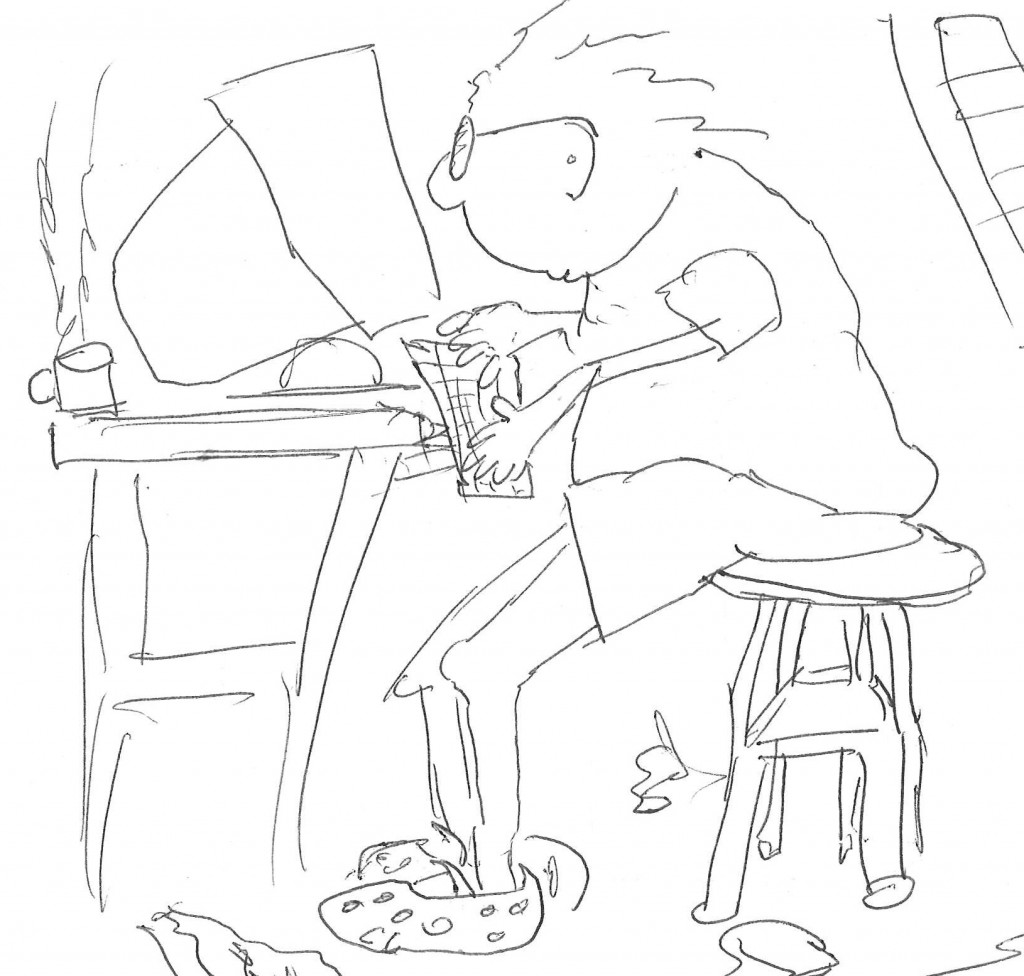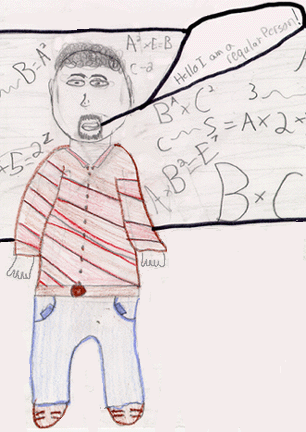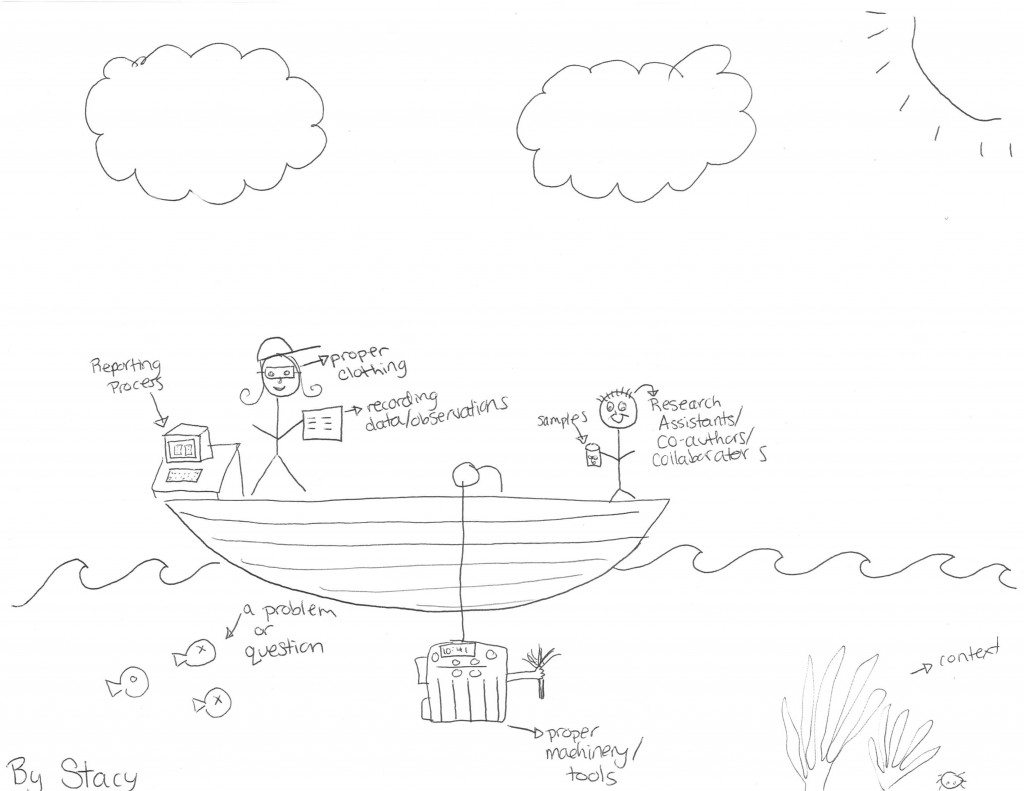 Who is a scientist? Well, there’s the reality. And that has been nicely documented recently under the #iamscience hashtag on Twitter. (Storify version of its origins here.)
Who is a scientist? Well, there’s the reality. And that has been nicely documented recently under the #iamscience hashtag on Twitter. (Storify version of its origins here.)
But then there are the perceptions. The preconceptions. The stereotypes. And because scientists are nearly as prone to mirror gazing as journalists are, it’s perhaps no surprise that there’s a robust literature on the public perception of scientists and their work. (Upshot: trustworthy but cold. And maybe a little weird.)
When it comes to kids, and what they think about scientists, one of the oldest survey methods is something called the Draw-A-Scientist Test, or DAST, first deployed in the early 1980s. (Actually it was anticipated by Margaret Mead as far back as 1957, though she favored essays over doodles.) And for as long as researchers have been asking kids to draw pictures of scientists, those researchers have been quite certain that the kids should have drawn something else.
As a 1992 review put it, “The stereotypical image of the scientist is a balding, middle-aged man in a white coat surrounded by bunsen burners, or doing unspeakable things to rats.” Boys, typically, draw only men doing science, while girls are more likely to include a few female practitioners. As in, 28 woman scientists out of 5,000 total drawings in the original 1983 study. Things have apparently improved vis a vis gender representation since then, but even the reviewer above didn’t think to mention that the drawings almost invariably depict the color spectrum of science as ranging from paper-white to light pink.

Abashed, some institutions have stooped to manipulating kids into drawing less starkly Einsteinian caricatures. Fermilab, for example, boasts a charming series of “before and after” images of and reflections on scientists, culled from pre and post lab-visit drawing sessions. (Many others have written about this, not least our own Ann Finkbeiner, in an early LWON post I just now learned about.) The pictures move none-too-subtly towards gender and ethnic equity, and in fact may outstrip many actual fields of science in doing so. The post-tour descriptions of what the students have learned are the best, though. One sample: “Scientists come in all shapes and forms. Women, men, chemists, biologists, and physicists are all in the field of science.” Another: “The stereotype gives the impression of a geek with glasses or someone who is bald. Actually, they are just people who ask and answer questions.” And “. . . anyone can be a scientist. I saw people walking around in sweatshirts and jeans. Who knows? Maybe I can be a scientist.”
But school kids are notorious suckers for propaganda. What about skeptical college students? One of them recently administered the Draw-A-Scientist Test to students in my environmental journalism class, a mix of Master’s-level journalism students and science majors and grad students, with other assorted souls sifted in for leavening.
 And across the board, they drew visions of science that, hot damn, made me momentarily reconsider my long-ago decision to move on from science to journalism. Exploration! Glamor! Glamorous exploration in what could be a cave or an ocean!
And across the board, they drew visions of science that, hot damn, made me momentarily reconsider my long-ago decision to move on from science to journalism. Exploration! Glamor! Glamorous exploration in what could be a cave or an ocean!
My own doodle was of a gender-neutral individual with nose pressed to computer screen (see top image: not a self-portrait), but for my students, science seems to be nothing but a grand adventure, conducted outside in exotic locales, by smiling people.
Several of them are already primed to become excellent science journalists. But all of them are going to make science propagandists the likes of which we’ve never seen before:
Images Top: By the author, not of the author. In color: From the Fermilab series. The rest: The really quite cheery students of Comm/EnvRes 277c.
Is your very charming scientist wearing Crocs?
Certainly.Closed-toes-in-the-lab requirements disqualify Tevas…
A note on the top scientist’s footwear: I agree with some readers that they do also look like leopard skin slippers. But that would make this a drawing of a freelance journalist, not a scientist.
Love this: “The stereotype gives the impression of a geek with glasses or someone who is bald. Actually, they are just people who ask and answer questions.”
I like to propagandize to kids that when you’re a scientist, you make guesses and it’s okay to be wrong.
Tom, maybe you should change careers yet again and become a visual artist! Your cartoon is absolutely charming.
Thanks, Ginny! I think perhaps you’re saying that I can draw better than a fifth grader 🙂
I especially like the swimming scientist with transparent arms.